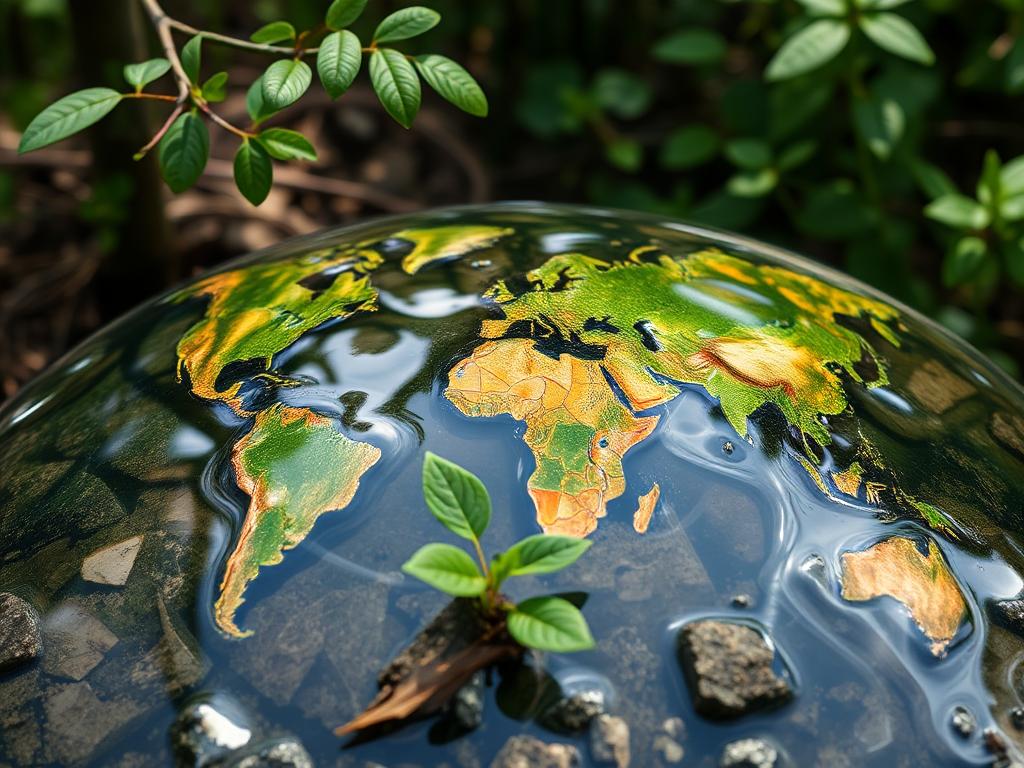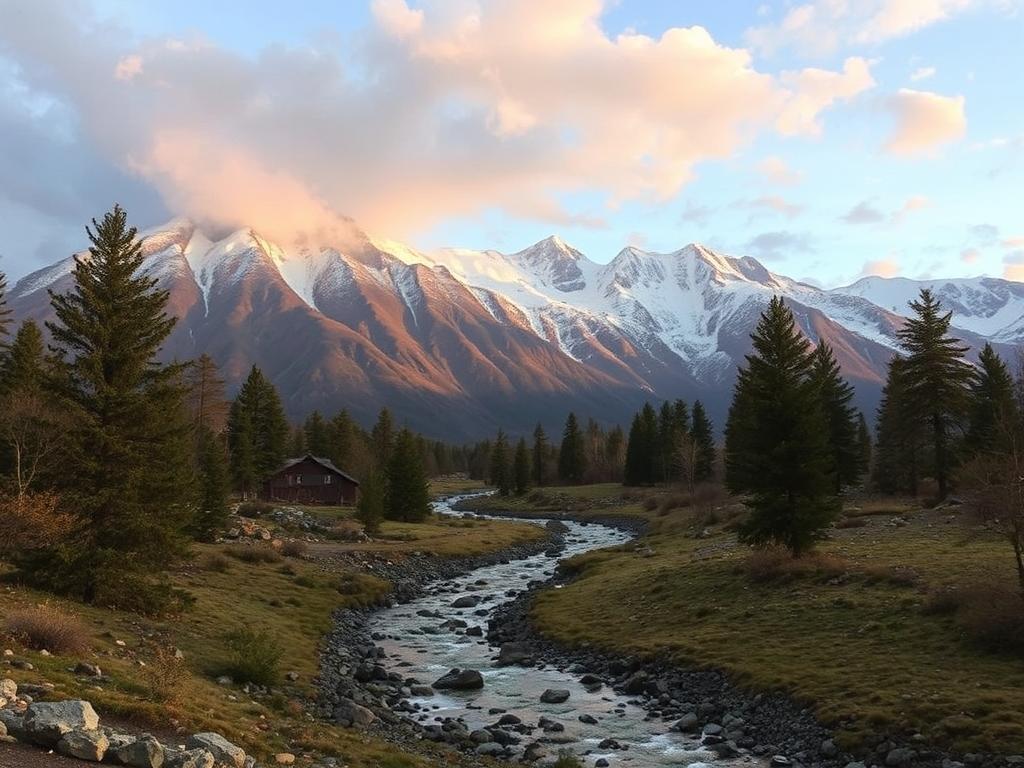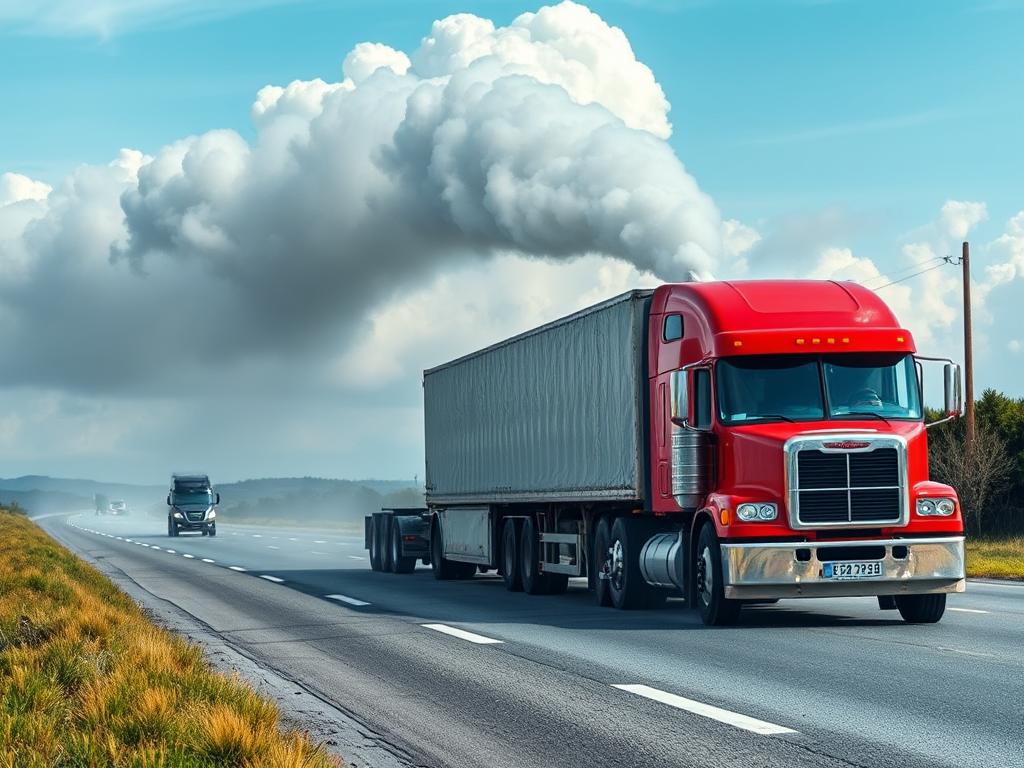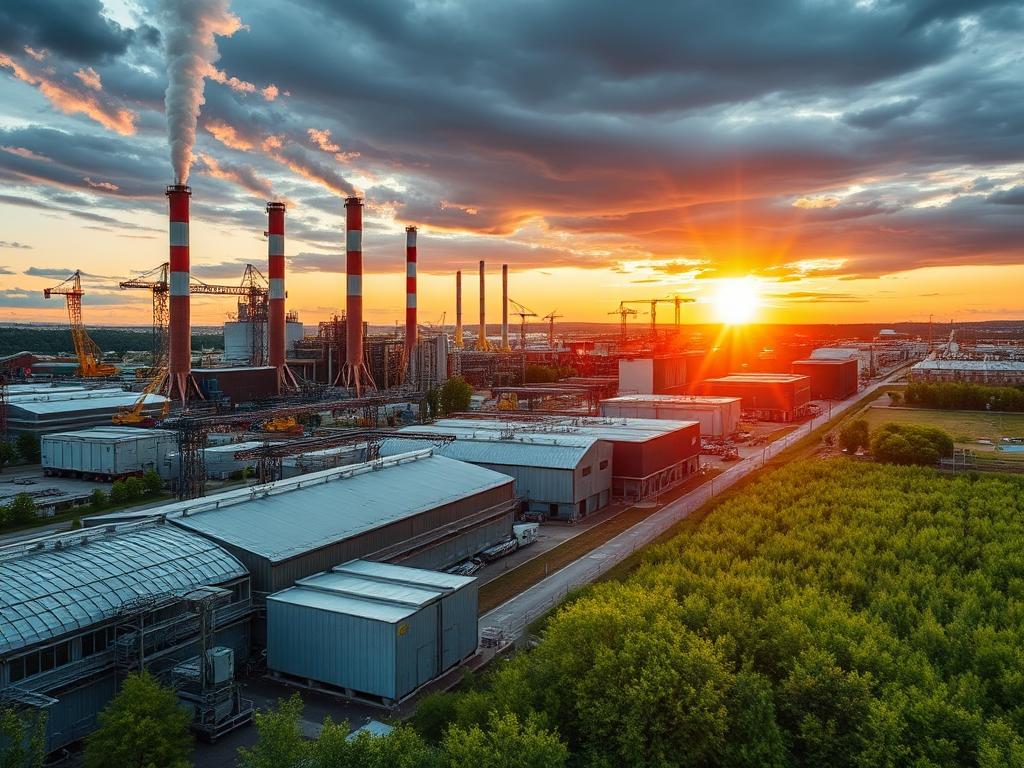The phenomenon known as the "greenhouse effect," which scientists use to characterize how some atmospheric gases "trap" heat that would otherwise radiate upward from the planet's surface into outer space, lies at the heart of climate change. On the one hand, the existence of life on Earth is due to the greenhouse effect; without it, the earth would be frigid and uninhabitable.
However, human activities started to intensify the greenhouse effect in the middle to late 19th century. The outcome? a planet that is currently warmer than it has ever been and continues to become warmer. As a result, natural cycles and weather patterns have been drastically changed by global warming, leading to high heat, prolonged drought, greater flooding, stronger storms, and rising sea levels. Together, these unpleasant and even fatal consequences have been dubbed "climate change."
The goal of describing and talking about the human causes of climate change is not to shame or try to make people feel bad about the decisions they have made. In order to come up with workable solutions, it is important to define the issue. And, despite the fact that doing so might occasionally be challenging or even painful, we must honestly confront its causes. Our earth is now overheated as a result of the remarkable production gains produced by human civilization. We can, however, develop solutions to combat climate change, cool the world, and steer toward a more fair, equitable, and sustainable future by utilizing that same capacity for innovation and tying it to a revitalized sense of shared duty.
Read Also: How does climate change affect heat domes?
Climate Change's Natural Sources

Natural events are responsible for a certain degree of climate change. Volcanic eruptions, variations in solar radiation, tectonic movements, and even minor adjustments to our orbit have all had discernible impacts on patterns of planetary warming and cooling throughout Earth's history.
However, climatic records may demonstrate that the current rate of global warming, especially that which has been occurring since the beginning of the industrial revolution, is far quicker than it has ever been. "These natural causes are still at work today, but their impact is too small or they happen too slowly to explain the rapid warming seen in recent decades," NASA claims. Furthermore, the data disprove the myth propagated by conservative think tanks and those in the fossil fuel business that the primary drivers of climate change are natural.
Climate change caused by human activity

Scientists concur that the main cause of the current global situation is human activities. (The term "anthropogenic," which simply means "caused by human beings," is occasionally used to describe this kind of climate change.) The amount of greenhouse gases, particularly carbon dioxide, in the atmosphere has significantly grown during the past 150 years due to the uncontrolled combustion of fossil fuels. Forests, wetlands, and other carbon sinks—natural resources that store carbon dioxide and keep it from being released into the atmosphere—have been extensively destroyed as a result of logging and industrialization.
Must Read: What are the effects of consumption and production on climate change?
The levels of greenhouse gases such as carbon dioxide, methane, and nitrous oxide in the atmosphere are at their highest point in the previous 800,000 years. Hydrochlorofluorocarbons (HFCs) are one type of greenhouse gas that isn't even found in nature. We contributed to the 20th century's increase in the earth's average temperature by around 1.9 degrees Fahrenheit by regularly releasing these gases into the atmosphere, which led to the current period of lethal and more frequent weather extremes. Furthermore, it's crucial to remember that although everyone is impacted by climate change, not everyone is equally affected: Even though they contribute far less to global warming, people of color and members of underprivileged or politically disenfranchised communities worldwide pay a disproportionately heavy price.
Moving around

One of the main causes of global greenhouse gas emissions is the vehicles we use to move ourselves and our belongings, including automobiles, trucks, ships, and airplanes. (In fact, they are the single largest supplier in the United States.) Massive volumes of carbon dioxide are released into the environment when combustion engines run on fuel derived from petroleum. About 4.6 metric tons of carbon dioxide are released annually by the average passenger automobile, which is responsible for 41% of those emissions. Furthermore, vehicles are the biggest source of pollution on the road. Despite making up only 4% of all cars in the United States, trucks are responsible for 23% of all transportation-related greenhouse gas emissions since they operate nearly continuously and mostly consume diesel fuel.
We can reduce these figures, but significant expenditures are required to expand access to dependable public transportation and put more zero-emission cars on the road.
Production of electricity
Coal, natural gas, and other fossil fuels are used to produce it. About 25% of greenhouse gas emissions in the United States, such as carbon dioxide, methane, and nitrous oxide, are caused by the power sector's previous investment in these polluting energy sources.
But that past is changing significantly: Utilities are increasingly using renewable energy sources like solar and wind as they become more affordable and simpler to deploy. Every year, the proportion of clean, renewable energy rises, and pollutants fall in tandem with that expansion.
You May Also Like: How much would the sea level rise if the glaciers from the Greenland Ice Sheet melted due to climate change?
Manufacturing and industry

Our products' manufacturing plants and facilities are major contributors to greenhouse gas emissions; in 2020, they accounted for a whopping 24% of U.S. emissions. A limited number of carbon-intensive items, such as basic chemicals, iron and steel, cement and concrete, aluminum, glass, and paper, are responsible for the majority of industrial emissions. Producers must use enormous quantities of energy to create the fundamental components of our infrastructure as well as the wide range of goods that customers seek. These gases, along with other dangerous types of air pollution, are also commonly released by older facilities that require efficiency improvements.
Farming
The important but sensitive interaction between soil and climate has been profoundly changed by the introduction of modern, industrialized agriculture, to the point where in 2020, agriculture was responsible for 11% of greenhouse gas emissions in the United States. This industry is particularly well-known for releasing copious volumes of methane and nitrous oxide, two potent gases that are excellent heat traps. Due to the extensive use of chemical fertilizers and some crop-management techniques that put yields ahead of soil health, agriculture is responsible for over three-quarters of the nitrous oxide in our atmosphere. The digestive processes of cattle and other ruminants release methane into the atmosphere, and large-scale industrialized livestock production remains a major source of this gas.
Development of oil and gas
Emissions from the production and use of gas and oil occur not only when they are consumed as fuel but also as soon as we drill a hole in the earth to start extracting them. Methane, which always escapes from oil and gas activities including drilling, fracking, transporting, and refining, is primarily produced by the production of fossil fuels. Furthermore, methane traps far more heat in the first 20 years after it is released into the atmosphere than carbon dioxide, despite being a less common greenhouse gas. Methane leaks even from inactive and abandoned wells, frequently referred to as "orphaned" wells. Over 280,000 metric tons of methane were released in 2018 from more than 3 million of these outdated, abandoned wells, which are dispersed throughout the nation.
Deforestation
Clearcutting the world's forests and degrading its wetlands are two more ways we're adding greenhouse gases to the sky. Carbon is stored by soil and vegetation, which preserve it underground or at ground level. We are destroying or excavating vegetative biomass and releasing all of its stored carbon into the atmosphere through logging and other development methods. Every year, clearcutting in Canada's boreal forest alone releases almost 25 million metric tons of carbon dioxide into the atmosphere, which is equal to the emissions from 5.5 million cars.
Our lifestyle decisions

Our individual carbon footprints are the result of the daily choices we make about what to buy, how much power to use, how to travel about, and what to eat (and not eat—food waste accounts for 4% of all greenhouse gas emissions in the United States). The total carbon footprint of humanity is the result of adding them all up. In order to reduce it, we must first recognize that the causes and impacts of climate change are not evenly distributed, and then those who are most accountable for global greenhouse gas emissions must cut them without further harming those who are least responsible.
FAQs
What are the primary factors affecting climate?
Natural elements like latitude, height, and the existence of ocean currents affect a region's temperature characteristics. Factors like a region's closeness to mountain ranges and predominant winds might affect its precipitation characteristics.
What are the nature causes of climate change?
Climate change is caused by a number of natural forces, according to climatologists. The tilt of the planet, ocean currents, comets, meteorites, and continental drift are a few of the more notable ones.
Which factors are the main contributors to climate change?
The earth's climate has altered since the Industrial Revolution as a result of human activity's massive emissions of carbon dioxide and other greenhouse gases into the atmosphere. The earth's climate is also influenced by natural phenomena like volcanic eruptions and variations in the sun's energy.
The phenomenon known as the "greenhouse effect," which scientists use to characterize how some atmospheric gases "trap" heat that would otherwise radiate upward from the planet's surface into outer space, lies at the heart of climate change. On the one hand, the existence of life on Earth is due to the greenhouse effect; without it, the earth would be frigid and uninhabitable.
However, human activities started to intensify the greenhouse effect in the middle to late 19th century. The outcome? a planet that is currently warmer than it has ever been and continues to become warmer. As a result, natural cycles and weather patterns have been drastically changed by global warming, leading to high heat, prolonged drought, greater flooding, stronger storms, and rising sea levels. Together, these unpleasant and even fatal consequences have been dubbed "climate change."
The goal of describing and talking about the human causes of climate change is not to shame or try to make people feel bad about the decisions they have made. In order to come up with workable solutions, it is important to define the issue. And, despite the fact that doing so might occasionally be challenging or even painful, we must honestly confront its causes. Our earth is now overheated as a result of the remarkable production gains produced by human civilization. We can, however, develop solutions to combat climate change, cool the world, and steer toward a more fair, equitable, and sustainable future by utilizing that same capacity for innovation and tying it to a revitalized sense of shared duty.
Read Also: How does climate change affect heat domes?
Climate Change's Natural Sources
Natural events are responsible for a certain degree of climate change. Volcanic eruptions, variations in solar radiation, tectonic movements, and even minor adjustments to our orbit have all had discernible impacts on patterns of planetary warming and cooling throughout Earth's history.
However, climatic records may demonstrate that the current rate of global warming, especially that which has been occurring since the beginning of the industrial revolution, is far quicker than it has ever been. "These natural causes are still at work today, but their impact is too small or they happen too slowly to explain the rapid warming seen in recent decades," NASA claims. Furthermore, the data disprove the myth propagated by conservative think tanks and those in the fossil fuel business that the primary drivers of climate change are natural.
Climate change caused by human activity
Scientists concur that the main cause of the current global situation is human activities. (The term "anthropogenic," which simply means "caused by human beings," is occasionally used to describe this kind of climate change.) The amount of greenhouse gases, particularly carbon dioxide, in the atmosphere has significantly grown during the past 150 years due to the uncontrolled combustion of fossil fuels. Forests, wetlands, and other carbon sinks—natural resources that store carbon dioxide and keep it from being released into the atmosphere—have been extensively destroyed as a result of logging and industrialization.
Must Read: What are the effects of consumption and production on climate change?
The levels of greenhouse gases such as carbon dioxide, methane, and nitrous oxide in the atmosphere are at their highest point in the previous 800,000 years. Hydrochlorofluorocarbons (HFCs) are one type of greenhouse gas that isn't even found in nature. We contributed to the 20th century's increase in the earth's average temperature by around 1.9 degrees Fahrenheit by regularly releasing these gases into the atmosphere, which led to the current period of lethal and more frequent weather extremes. Furthermore, it's crucial to remember that although everyone is impacted by climate change, not everyone is equally affected: Even though they contribute far less to global warming, people of color and members of underprivileged or politically disenfranchised communities worldwide pay a disproportionately heavy price.
Moving around
One of the main causes of global greenhouse gas emissions is the vehicles we use to move ourselves and our belongings, including automobiles, trucks, ships, and airplanes. (In fact, they are the single largest supplier in the United States.) Massive volumes of carbon dioxide are released into the environment when combustion engines run on fuel derived from petroleum. About 4.6 metric tons of carbon dioxide are released annually by the average passenger automobile, which is responsible for 41% of those emissions. Furthermore, vehicles are the biggest source of pollution on the road. Despite making up only 4% of all cars in the United States, trucks are responsible for 23% of all transportation-related greenhouse gas emissions since they operate nearly continuously and mostly consume diesel fuel.
We can reduce these figures, but significant expenditures are required to expand access to dependable public transportation and put more zero-emission cars on the road.
Production of electricity
Coal, natural gas, and other fossil fuels are used to produce it. About 25% of greenhouse gas emissions in the United States, such as carbon dioxide, methane, and nitrous oxide, are caused by the power sector's previous investment in these polluting energy sources.
But that past is changing significantly: Utilities are increasingly using renewable energy sources like solar and wind as they become more affordable and simpler to deploy. Every year, the proportion of clean, renewable energy rises, and pollutants fall in tandem with that expansion.
You May Also Like: How much would the sea level rise if the glaciers from the Greenland Ice Sheet melted due to climate change?
Manufacturing and industry
Our products' manufacturing plants and facilities are major contributors to greenhouse gas emissions; in 2020, they accounted for a whopping 24% of U.S. emissions. A limited number of carbon-intensive items, such as basic chemicals, iron and steel, cement and concrete, aluminum, glass, and paper, are responsible for the majority of industrial emissions. Producers must use enormous quantities of energy to create the fundamental components of our infrastructure as well as the wide range of goods that customers seek. These gases, along with other dangerous types of air pollution, are also commonly released by older facilities that require efficiency improvements.
Farming
The important but sensitive interaction between soil and climate has been profoundly changed by the introduction of modern, industrialized agriculture, to the point where in 2020, agriculture was responsible for 11% of greenhouse gas emissions in the United States. This industry is particularly well-known for releasing copious volumes of methane and nitrous oxide, two potent gases that are excellent heat traps. Due to the extensive use of chemical fertilizers and some crop-management techniques that put yields ahead of soil health, agriculture is responsible for over three-quarters of the nitrous oxide in our atmosphere. The digestive processes of cattle and other ruminants release methane into the atmosphere, and large-scale industrialized livestock production remains a major source of this gas.
Development of oil and gas
Emissions from the production and use of gas and oil occur not only when they are consumed as fuel but also as soon as we drill a hole in the earth to start extracting them. Methane, which always escapes from oil and gas activities including drilling, fracking, transporting, and refining, is primarily produced by the production of fossil fuels. Furthermore, methane traps far more heat in the first 20 years after it is released into the atmosphere than carbon dioxide, despite being a less common greenhouse gas. Methane leaks even from inactive and abandoned wells, frequently referred to as "orphaned" wells. Over 280,000 metric tons of methane were released in 2018 from more than 3 million of these outdated, abandoned wells, which are dispersed throughout the nation.
Deforestation
Clearcutting the world's forests and degrading its wetlands are two more ways we're adding greenhouse gases to the sky. Carbon is stored by soil and vegetation, which preserve it underground or at ground level. We are destroying or excavating vegetative biomass and releasing all of its stored carbon into the atmosphere through logging and other development methods. Every year, clearcutting in Canada's boreal forest alone releases almost 25 million metric tons of carbon dioxide into the atmosphere, which is equal to the emissions from 5.5 million cars.
Our lifestyle decisions
Our individual carbon footprints are the result of the daily choices we make about what to buy, how much power to use, how to travel about, and what to eat (and not eat—food waste accounts for 4% of all greenhouse gas emissions in the United States). The total carbon footprint of humanity is the result of adding them all up. In order to reduce it, we must first recognize that the causes and impacts of climate change are not evenly distributed, and then those who are most accountable for global greenhouse gas emissions must cut them without further harming those who are least responsible.
FAQs
What are the primary factors affecting climate?
Natural elements like latitude, height, and the existence of ocean currents affect a region's temperature characteristics. Factors like a region's closeness to mountain ranges and predominant winds might affect its precipitation characteristics.
What are the nature causes of climate change?
Climate change is caused by a number of natural forces, according to climatologists. The tilt of the planet, ocean currents, comets, meteorites, and continental drift are a few of the more notable ones.
Which factors are the main contributors to climate change?
The earth's climate has altered since the Industrial Revolution as a result of human activity's massive emissions of carbon dioxide and other greenhouse gases into the atmosphere. The earth's climate is also influenced by natural phenomena like volcanic eruptions and variations in the sun's energy.